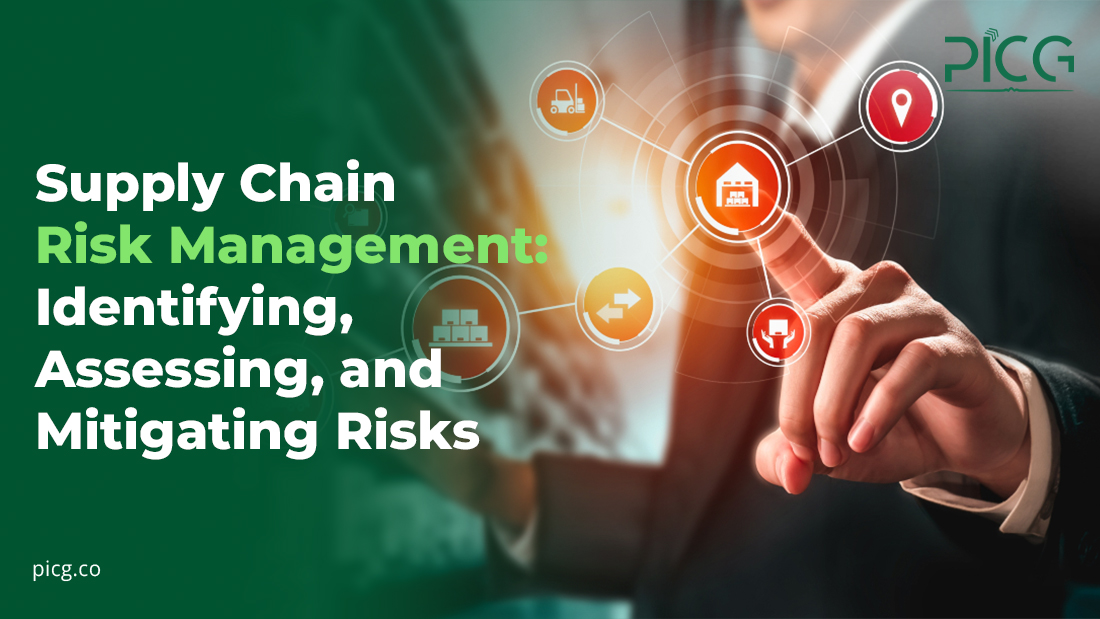


PICG

In the intricate world of business, supply chains act as the lifeline, ensuring products reach consumers seamlessly. However, this intricate web of suppliers, manufacturers, and distributors is not without its challenges. Unexpected events like natural disasters, political unrest, or even a pandemic can disrupt the flow, impacting businesses and consumers alike.
This is where effective Supply Chain Risk Management (SCRM) becomes paramount. Let’s delve into the essential aspects of identifying, assessing, and mitigating risks within the supply chain.
The first step in managing risks is identifying them. Risks can come from various sources such as supplier issues, demand fluctuations, geopolitical events, or even cybersecurity threats. Businesses must conduct a comprehensive analysis of their supply chain, considering every step from raw material acquisition to product delivery. By understanding the vulnerabilities within the supply chain, companies can proactively prepare for potential disruptions.
Once risks are identified, it’s essential to assess their potential impact. Not all risks are equal; some might have minor inconveniences, while others can halt operations entirely. A risk assessment involves evaluating the likelihood of an event occurring and its potential consequences. By assigning levels of severity to different risks, businesses can prioritize their focus.
For instance, a perishable goods supplier might focus more on transportation-related risks, while a tech company might prioritize cybersecurity threats.
Mitigating risks involves implementing strategies to minimize the impact of potential disruptions. While it’s impossible to eliminate all risks, effective mitigation strategies can significantly reduce their effects. Here are some common mitigation techniques:
Diversifying Suppliers: Relying on a single supplier for critical components can be risky. Diversifying suppliers, even across different regions, can ensure a steady supply even if one source is compromised.
Building Inventory: Maintaining a buffer stock can cushion the impact of supply disruptions. However, this strategy requires balancing the costs associated with excess inventory against the potential losses from a disruption.
Collaborative Relationships: Building strong relationships with suppliers and partners fosters open communication. Collaborative partnerships often result in mutual support during challenging times, helping both parties navigate disruptions effectively.
Technology Integration: Implementing advanced technologies like IoT sensors and data analytics can enhance supply chain visibility. Real-time monitoring allows businesses to identify potential issues early, enabling proactive responses to mitigate risks.
Contingency Planning: Developing comprehensive contingency plans is essential. These plans outline specific steps to be taken when a disruption occurs, ensuring that everyone involved knows their roles and responsibilities.
During the COVID-19 pandemic, supply chains worldwide faced unprecedented challenges. Companies that had diversified their suppliers and invested in digital technologies coped better with the sudden surge in demand and disruption in logistics. For instance, Amazon, with its advanced data analytics, swiftly adjusted its inventory, ensuring essential items were readily available. The ability to adapt quickly was a result of proactive supply chain risk management strategies.
In the end note, supply chain risk management is not just a business strategy; it's a necessity in today's unpredictable world. By identifying potential risks, assessing their impact, and implementing effective mitigation strategies, businesses can safeguard their operations and ensure a continuous supply of goods and services. The key lies in being proactive, building resilient relationships, leveraging technology, and having well-thought-out contingency plans. With these measures in place, businesses can navigate uncertainties, ensuring their supply chains remain robust and responsive in the face of challenges.